Sexual Health- Birth control & contraception
What is contraception?
Contraception is defined as methods used to prevent a woman from becoming pregnant. These methods are called birth control.
Many child-bearing women across the nation experience barriers preventing them from obtaining access to contraception, such as:
- Geographic location
- Accurate information about these methods
- Privacy concerns
- Cost (if not using insurance or uninsured)
- Provider/clinic protocols that do not align with laws and best practices
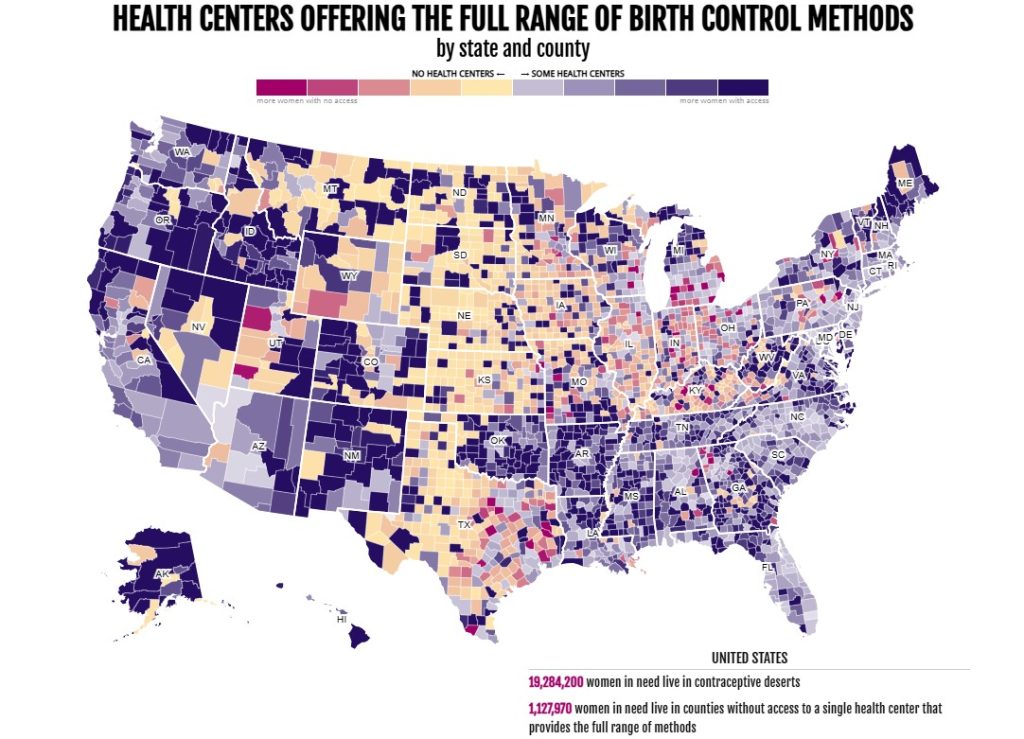
Source- Power to Decide. To learn more, click on Contraceptive deserts and State contraceptive access.
Information about birth control
How does birth control work?
- Blocks sperm from getting into the fallopian tube
- Blocks the release of an egg (aka ovulation)
- Prevents the fertilized egg from implanting itself into the uterine wall, which is needed for a viable pregnancy to occur.
Choosing a method: Things to consider
- How frequently used (i.e. daily, monthly, annually, etc.)
- Method efficacy at preventing pregnancy (i.e. How well does the method prevent pregnancy?)
- If a doctor’s prescription or visit is needed.
- Is it private? (i.e. Will my parents or significant other find out?)
- Is an insertion procedure needed.
- Is it painful?
- Does it help with period problems? Acne?
- Other matters to consider- , prevention of sexually transmitted diseases, weight gain, hormone response, return to fertility after use, etc.
Concerns about Birth Control
- Fertility- No effect, protective for some
- Blood Clot/stroke- Certain people should avoid methods with estrogen (i.e. smokers)
- Cancer- Reduce ovary & uterus cancer. No restrictions if family history of breast cancer
- Weight gain- Combined methods‐ no evidence. Progestin‐only methods‐ for some people
- Depression- No method contraindicated. Many users note stabilization with use
- Safety of menstrual suppression– It is safe to not have periods when on hormonal therapy
Types of birth control
The best birth control method is the one that works for the person using it.*
Condoms-
- Pros- Anyone can buy them.
- Many clinics/centers give for free.
- Protect from STI’s and prevent pregnancy.
- Skills for using a condom*:
- Talk to partner
- Have one ready
- Know how to put it on and take it off
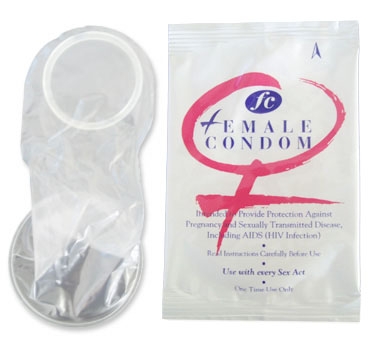

Oral Contraceptive Pills (OCPs) “The Pill”-
- Combined pills contains estrogen and progestin
- Can start anytime in cycle
- Contraceptive effect: prevent ovulation only
- Non‐contraceptive effects:
- Decreased bleeding and menstrual pain
- Can be safely used to have fewer or no periods
- Improves acne
- Available over the counter (Opill)– no prescription needed*
- Low dose, progestin‐only pill
- Contraceptive mechanism: blocks sperm and prevents ovulation (variable) only
- Does not have same benefits as combined birth control pills (OCP’s)*
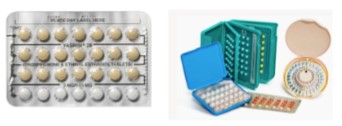
Ring and patch
- Contain estrogen and progestin (just like OCP)
- Contraceptive effect: prevent ovulation only
- Non contraceptive benefits: same as OCP
- Patch‐ apply to skin and change each week
- Ring‐ insert into vagina every month or annually
- It is soft and flexible
- Partner might feel during penis‐vaginal sex, but not bothersome.

Long‐Acting Reversible Contraception (“LARC ”)
- Pros: Long‐Acting: 3‐12 years.
- Reversible: no effect on future fertility.
- Contraception: most effective methods (<1% failure).**
- Safe for almost everyone.
- Requires an in‐office procedure*.
- Higher satisfaction and continuation than other methods.**
Types of LARC-
Subdermal Arm Implant (i.e. Nexplanon)
- Flexible device sits in subdermal space for 3+ years
- Can remove anytime
- Slowly releases medicine (progestin‐only)
- Contraceptive mechanism: prevents ovulation only
- Non contraceptive benefits-
- Helps with period pain for many
- Bleeding changes
- 25% have no bleeding
- 75% have unpredictable bleeding (spotting)

Injection/Shot (i.e. Depo/Provera)
- Injection every 3 months (In‐office or at home)
- Includes progestin‐only
- Contraceptive mechanism: prevents ovulation only
- Non‐contraceptive benefits
- Decreased menstrual pain and bleeding
- Bleeding common at first, but then no period for many
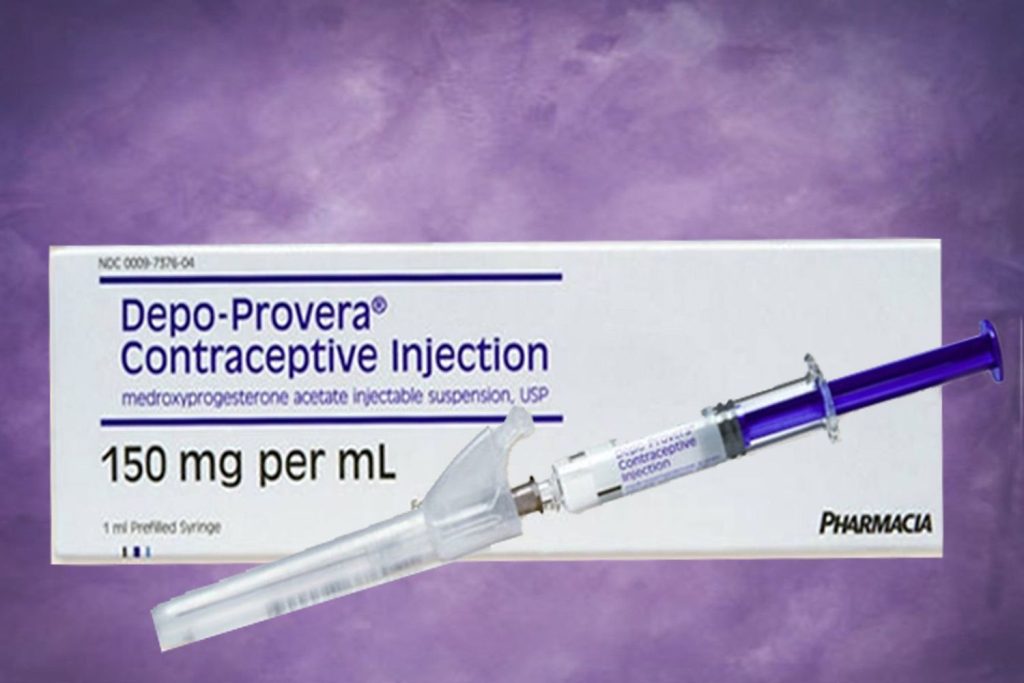
Intrauterine Devices (IUDs) (i.e. Mirena, Copper, Liletta)
- T‐shaped device sits inside uterus.
- 5‐minute procedure to insert; requires pelvic exam.
- Lasts 3‐12 years depending on IUD type; can remove anytime.
- Contraceptive mechanism: blocks sperm only.
- Can be used as emergency contraception.
- Types-
- Hormonal IUDs
- Contain progestin
- Non‐contraceptive benefits
- Less menstrual pain
- Less bleeding or no period
- Copper IUDs
- No hormones
- For some, periods heavier and more painful
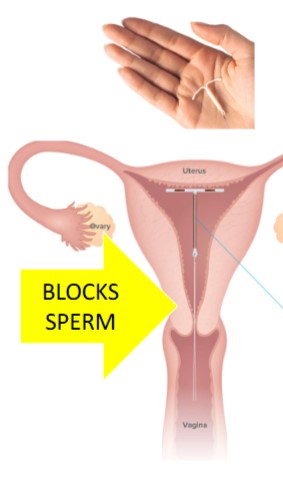
Emergency Contraception- Aka EC or “the morning after pill”
- Pros- Can take up to 5 days after sex
- More effective when taken sooner – reduce chance of pregnancy to 1%*
- Safe for everyone
- Contraceptive mechanism: prevents ovulation only
- Does not have any effect if someone is already pregnant
- It does NOT cause an abortion
Types of EC– Click here for more detailed information
Levonorgestrel pill: “Plan B”
- Over‐the counter ($40)
- Anyone (any age & gender) can buy
- Free from many family planning clinics
UPA pill: “Ella”
- Prescription‐only
- Insurance coverage
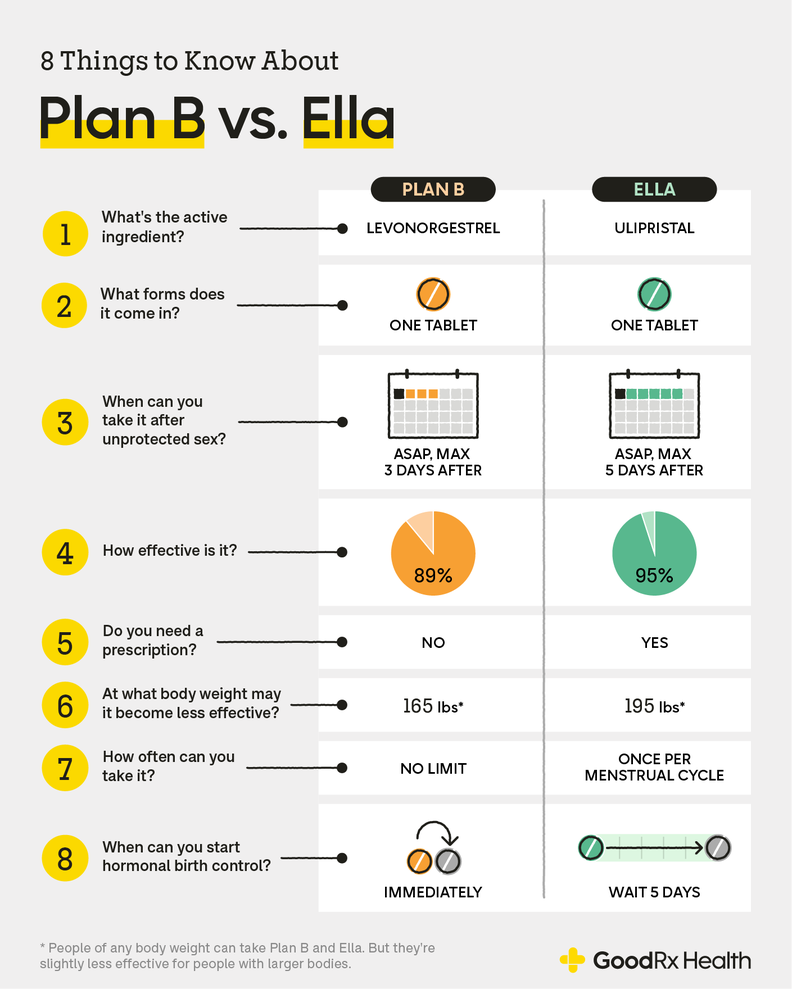
Source: GoodRx Health
To compare all birth control methods, click here.
Efficacy of each method– English and Spanish

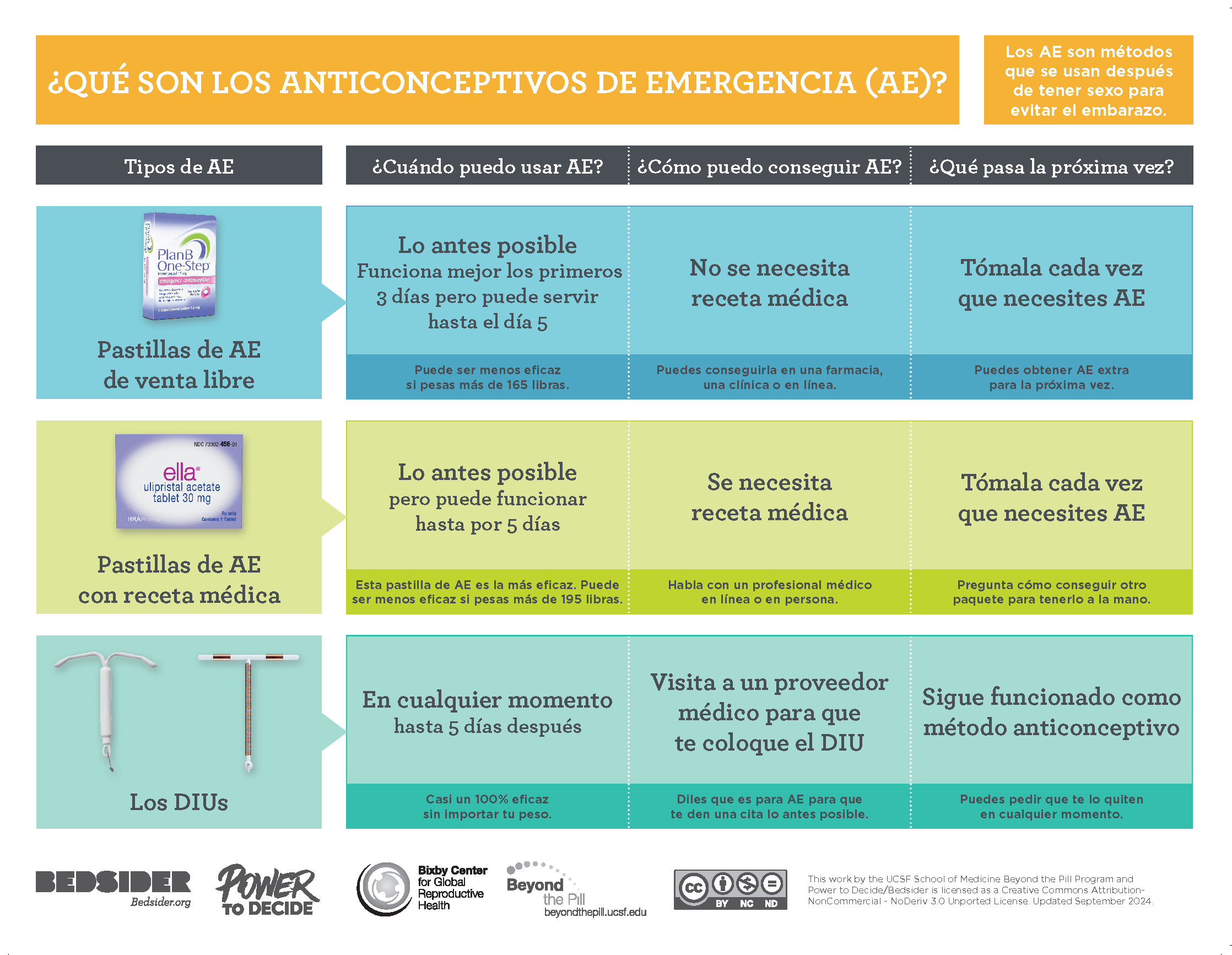
Source- University of California San Francisco- Beyond the Pill and KFF
NOTE- To learn more about all available methods, please have a discussion with a licensed health care provider.
Resources
International
- Action Canada- Pro-choice charitable organization committed to advancing and upholding sexual and reproductive health and rights in Canada and globally. Also known as Planned Parenthood in Canada.
National
- The Bedsider– Online birth control information and support network for people aged 18‐29.
- Reproductive health access project– Provides birth control fact sheets in English, Spanish, and Hindi
- Guttmacher Institute– Research and policy organization on sexual and reproductive health
- KFF- Addresses woman’s health policy issues (i.e. abortion)
- University of California San Francisco (Beyond the Pill)- Provides information (in English and Spanish) about contraception methods and how well they work
- Power to Decide– Provides trusted, high-quality, accurate information—backed by research—on sexual health and contraceptive methods so young people can make informed decisions.
- Planned Parenthood– Provides sexual and reproductive health services to all genders (including transgender).
- Path 4 You– Able to obtain free emergency contraception- for Indiana residents only
- Healthy Children- Website that provides information to youth, young adults, and parents about multiple health issues across the life span.
- American Academy of Pediatrics- Resources for adolescents, young adults, and parents about sexual and reproductive health
Local
- Peak Vista- Local community health center that provide sexual and reproductive health services, including contraception, pregnancy, testing and treatment of sexually transmitted infections.
- El Paso County Public Health Dept.- Provides sexual and reproductive health services in their Reproductive Health Clinic to all genders. Accept Medicaid*
- Planned Parenthood- Provides sexual and reproductive health services to all genders (including transgender).
- Boulder Valley Health Center- Sexual, gender-affirming, and reproductive care available to teens and adults
- New Era Colorado- Leading voice for young people in Colorado politics and one of the most effective youth civic engagement organizations in the country. Addresses Reproductive rights in CO.